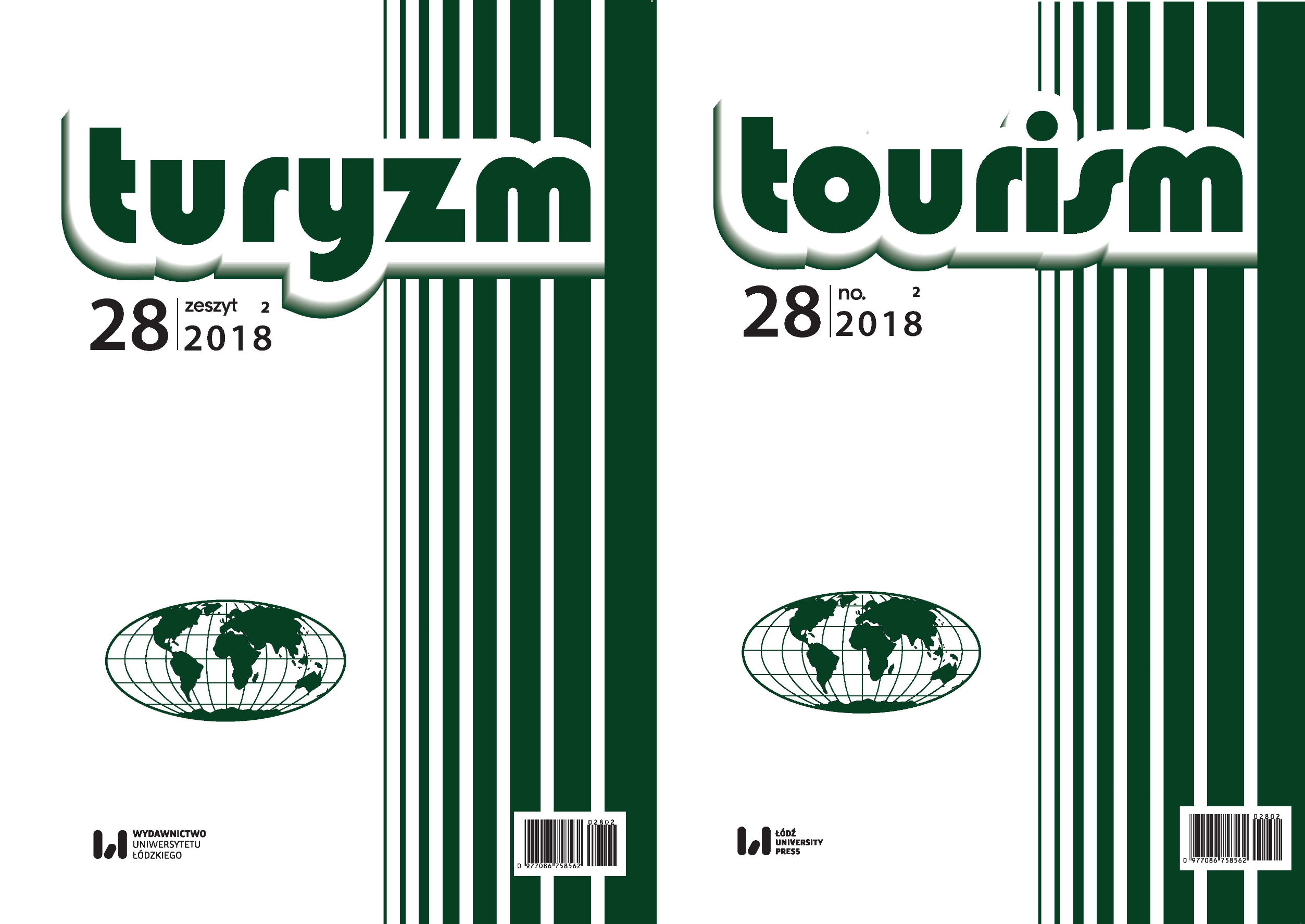Obiekty turystyki kulturowej w kontekście zwiększonego ryzyka terrorystycznego: młodzi turyści z Litwy wobec środków bezpieczeństwa
DOI:
https://doi.org/10.18778/0867-5856.28.2.10Keywords:
infrastruktura turystyczna, ryzyko terrorystyczne, bezpieczeństwo turystówAbstract
Ataki terrorystyczne w popularnych destynacjach turystycznych spowodowały pojawienie się istotnego dylematu, jakim jest znalezienie sposobów ochrony turystów i zapewnienie im odpowiedniej jakości odpoczynku. W artykule została przeprowadzona analiza ważności „miękkich” i „twardych” środków bezpieczeństwa, stosowanych w obiektach turystyki kulturowej, na podstawie przeprowadzonych wśród młodych turystów z Litwy badań ankietowych. Ich wyniki pokazały, że młodzi turyści znają środki bezpieczeństwa, stosowane w miejscach zagrożenia terroryzmem, chcą jednak podróżować bez ograniczeń, w poczuciu wolności, ale także z pewnością, że podróżują bezpiecznie.
Downloads
References
BARTON C., HAYWOOD J., JHUNJHUNWALA P., BHATIA V., 2013, Travelling with Millennials. The Boston Consulting Group, http://www.bcg.com/documents/file129974.pdf.
Google Scholar
BERNAŚ B., PUJER K., 2014, Bezpieczeństwo i zagrożenia w turystyce, „The Wroclaw School of Banking Research Journal”, 15, 2, s. 223–243.
Google Scholar
BUFFA F., 2015, Young tourists and sustainability. Profiles, attitudes, and implications for destination strategies, „Sustainability”, 7, s. 14042–14062.
Google Scholar
GARG A., 2015, Travel risks vs tourist decision making: A tourist perspective, „International Journal of Hospitality & Tourism Systems”, 8 (1), s. 1–9.
Google Scholar
HENDERSON J.C., 2007, Tourism crises: causes, consequences and management, Elsevier, Amsterdam.
Google Scholar
HORNER S., SWARBROOKE J., 2009, International cases in tourism management, Elsevier, Amsterdam.
Google Scholar
How Millennials killed travel marketing as we know it, http://www.mdgadvertising.com/e-books/How-Millennials-Killed-Travel-Marketing/Millennial-Traveler-Ebook.pdf.
Google Scholar
MACHADO A., 2014, How Millennials are changing travel, https://www.theatlantic.com/international/archive/2014/06/howmillennials-are-changing-international-travel/373007/.
Google Scholar
MANSFELD Y., PIZAM A., 2006, Tourism, security and safety: from theory to practice, Elsevier, Amsterdam.
Google Scholar
MARCZAK M., 2012, Wpływ terroryzmu na rozwój turystyki międzynarodowej, „Zeszyty Naukowe Uniwersytetu Szczecińskiego. Ekonomiczne Problemy Turystyki”, 4, 20, s. 89–102.
Google Scholar
MOISĂ C.O., 2010, Aspects of the youth travel demand, „Annales Universitatis Apulensis Series Oeconomica”, 12 (2), s. 575–582.
Google Scholar
MORRISON G., FERNANDES L., HAYASHI C., 2016, Millennial traveller report. Factory & expedia, https://www.foresightfactory.co/wp-content/uploads/2016/11/Expedia-Millennial-Traveller-Report-Final.pdf.
Google Scholar
MURA P., 2010, ‘Scary... but i like it!’ Young tourists’ perceptions of fear on holiday, „Journal of Tourism and Cultural Change”, 8 (1–2), s. 30–49.
Google Scholar
PACZYŃSKA-JĘDRYCKA M., EIDER J., 2017, Turystyka w obliczu terroryzmu, „Handel Wewnętrzny”, 4 (369), s. 196–205.
Google Scholar
red24’s Global terrorism risk map 2017, https://opinion.red24.com/2017/01/10/red24s-global-terrorism-risk-map-2017/
Google Scholar
SANTANA G., 2005, Globalisation, safety and national security, [w:] W. Salah, C. Cooper (eds.), Tourism in the age of globalisation, Routledge, London, New York, s. 213–241.
Google Scholar
SCHROEDER A., PENNINGTON-GRAY L., KAPLANIDOU K., ZHAN F., 2013, Destination risk perceptions among US residents for London as the Host City of the 2012 Summer Olympic Games, „Tourism Management”, 38, s. 107–119.
Google Scholar
SURVILA A., MIKĖNAS E., ŽUROMSKAITĖ B., 2017, The impact of terrorism on the tourism sector of Lithuania, „Montenegrin Journal of Economics”, 13, 3, s. 101–118.
Google Scholar
TARLOW P., 2006, A social theory of terrorism and tourism, [w:] Y. Mansfeld, A. Pizam (eds.), Tourism, security and safety: from theory to practice, Elsevier, Amsterdam, s. 33–48.
Google Scholar
TARLOW P., 2014, Reflective epilogue: concerns in tourism safety, „International Journal of Religious Tourism and Pilgrimage”, 2, s. 68–70.
Google Scholar
Travel risk and reality. The new normal for business 2016; https://www.internationalsos.com/risk-outlook.
Google Scholar
ŽUROMSKAITĖ B., NAGAJ R., DAČIULYTĖ R., 2018, Source of information on the perceived risk and safety in the tourism Industry, [w:] N. Grünwald, M. Zakrzewska (eds.), Series of the Robert-Schmidt-Institut: Proceedings of the 5th International Scientific Conference on „Modern Economics”, University of Wismar, Wismar, s. 179–185.
Google Scholar
Downloads
Published
How to Cite
Issue
Section
License

This work is licensed under a Creative Commons Attribution-NonCommercial-NoDerivatives 4.0 International License.










